Rather that trying to calculate the surface area of the egg (no easy task, though I could have pretended it was a sphere for a close estimate), I drew out a grid of half inch squares to glue the pieces on.
I used a large egg and dyed it in blue food coloring just so it would show up better on the grid. I then glued down all of the little pieces, covering one square at a time.
I did this quickly, so the pattern is much chunkier and uneven that it would be on a finished piece, but you can see that one shell does cover a lot of space – over 12 square inches for the large egg I used.
Knowing this, I can make a rough estimate of how many shells I will need. An eight inch by ten inch picture, for example, will require 80 square inches of egg bits. If an egg covers 12 square inches, then 80 divided by 12 = 7 eggs (rounding up). Of course you’ll probably want to figure out how many eggs of each color you’ll need. That takes a little more work.
Here’s a simple scene of the trylon and perisphere to show how to estimate the number of eggs needed for each color. The trick is to divide it into pieces that are relatively simple to calculate areas for.
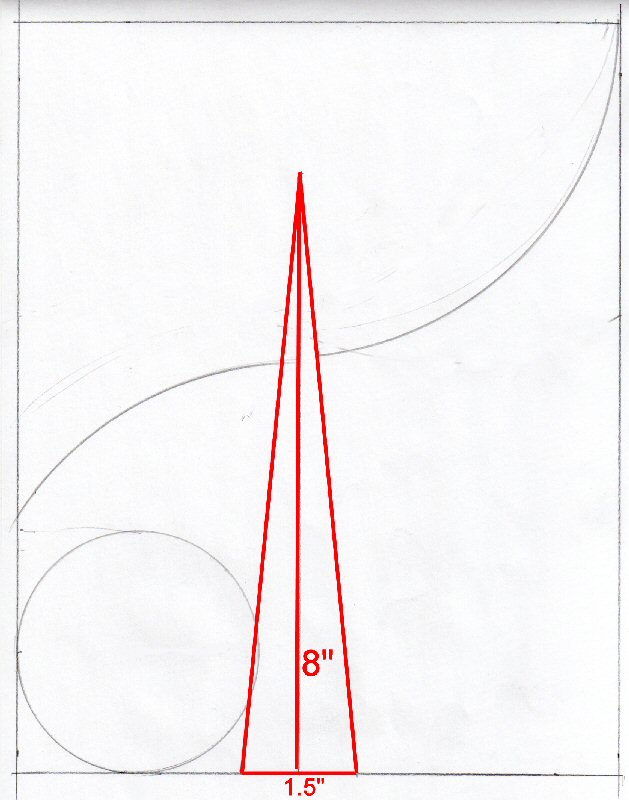 The circle is two colors, but it is mostly white, and it’s much easier to figure the area for the whole thing. The formula is A=pi*r² where A is the area and r is the radius of the circle. So A=pi * 1.5² = a little over 7, which is a little over half (.59) an egg.
The circle is two colors, but it is mostly white, and it’s much easier to figure the area for the whole thing. The formula is A=pi*r² where A is the area and r is the radius of the circle. So A=pi * 1.5² = a little over 7, which is a little over half (.59) an egg.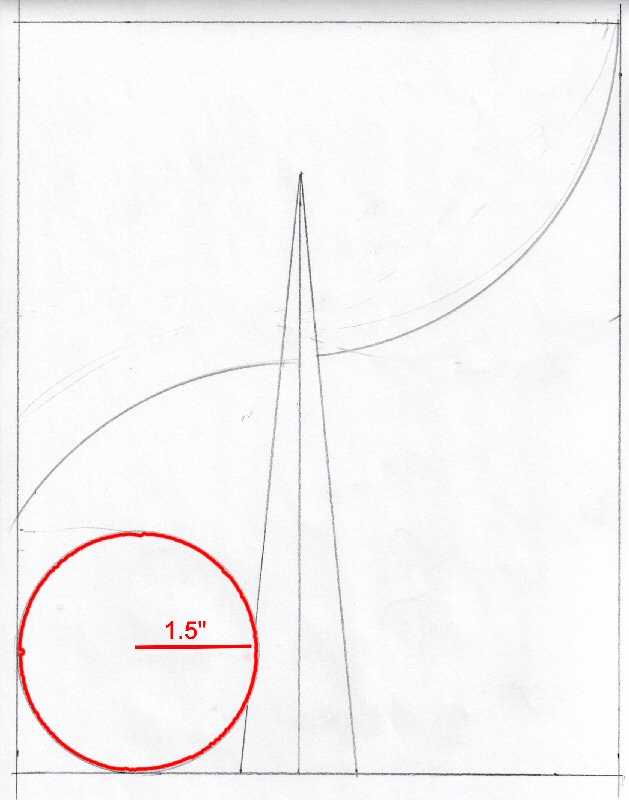 The other white part is half of the triangle. The whole triangle is 8 inches tall by 1.5 inches wide at the base. The formula for the area of a triangle is 1/2 of the base times the height, or 1/2 * (8 * 1.5) = 6 square inches. Half of that, 3 square inches, is white, and half is blue. So the total for white - the circle and half the triangle - is a little over 10 square inches, just under one egg. Blue is another 3 square inches plus a little for the edge of the circle, maybe 4.5 square inches total, less than half an egg for the blue.
The other white part is half of the triangle. The whole triangle is 8 inches tall by 1.5 inches wide at the base. The formula for the area of a triangle is 1/2 of the base times the height, or 1/2 * (8 * 1.5) = 6 square inches. Half of that, 3 square inches, is white, and half is blue. So the total for white - the circle and half the triangle - is a little over 10 square inches, just under one egg. Blue is another 3 square inches plus a little for the edge of the circle, maybe 4.5 square inches total, less than half an egg for the blue.Since the shapes are irregular, the rest of the picture is a little more difficult to measure accurately. However it is small enough that a rough estimate should be close enough. The whole picture is 80 square inches (8 inches by 10 inches). Subtract the total area for the circle and triangle, leaving 66 square inches. There are two colors, each covering roughly half the remaining area, or 33 square inches each. That rounds up to 3 eggs for each color.
 That should be close enough for a relatively small, simple picture, but for something larger you may want to divide each area of color into squares, rectangles and triangles, calculating the area for each. Quick measuring and math gave me a total of 30.8 square inches / 3 eggs for the dark orange, pretty close to my quick guess, above. There’s 6 square inches for the triangle, 7 for the circle, and 30.8 for the dark orange, 43.8 total. The whole thing it 80 square inches, so 80 – 43.8 = 36.2 or just over 3 eggs for the light orange. Three should do it since they actually cover more than 12 inches square each.
That should be close enough for a relatively small, simple picture, but for something larger you may want to divide each area of color into squares, rectangles and triangles, calculating the area for each. Quick measuring and math gave me a total of 30.8 square inches / 3 eggs for the dark orange, pretty close to my quick guess, above. There’s 6 square inches for the triangle, 7 for the circle, and 30.8 for the dark orange, 43.8 total. The whole thing it 80 square inches, so 80 – 43.8 = 36.2 or just over 3 eggs for the light orange. Three should do it since they actually cover more than 12 inches square each.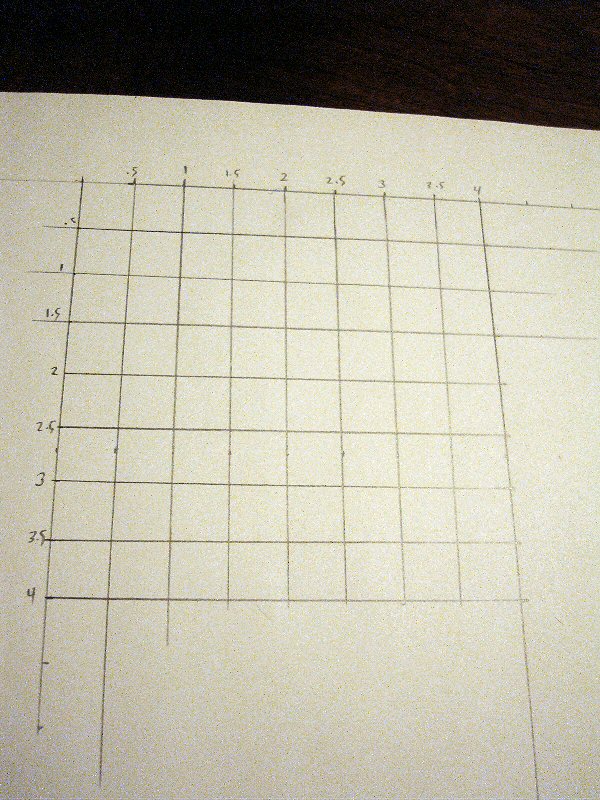

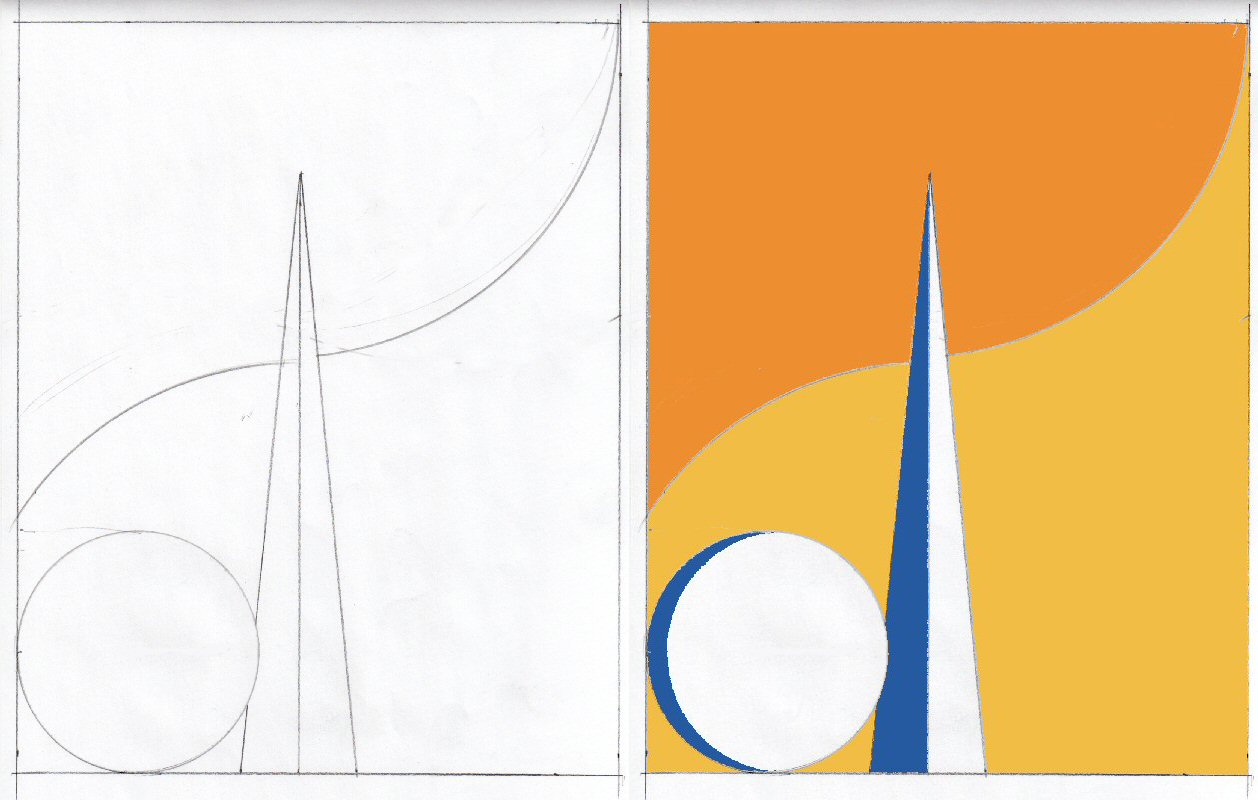
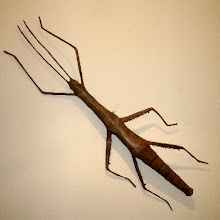



No comments:
Post a Comment